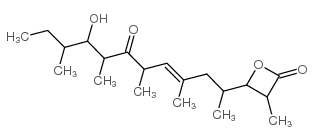Studies on low-molecular-weight immunomodifiers produced by microorganisms: results of ten years' effort.
H Umezawa
Index: Rev. Infect. Dis. 6(3) , 412-20, (1984)
Full Text: HTML
Abstract
The screening for low-molecular-weight enzyme inhibitors produced by microorganisms was initiated in 1966, and by 1972 inhibitors of various proteases had been discovered. At that time the study of enzyme inhibitors was expanded to include the search for low-molecular-weight immunomodifiers that might restore the reduced immunity in patients with cancer. It was assumed that the screening for compounds binding to cell membranes or surfaces would result in the finding of immunomodifiers and that inhibitors of enzymes on cell membranes or surfaces should bind to cells. Investigation revealed that aminopeptidases, alkaline phosphatase, and esterase are located on cell membranes, and inhibitors of these enzymes, all of which have the ability to modify (mostly enhance) immune responses, were discovered. Studies on these products (e.g., bestatin, forphenicine , forphenicinol , ebelactones , esterastin , and arphamenine ) are reviewed in this paper.
Related Compounds
| Structure | Name/CAS No. | Molecular Formula | Articles |
|---|---|---|---|
 |
Ebelactone A
CAS:76808-16-7 |
C20H34O4 |
|
Structural studies on ebelactone A and B, esterase inhibitor...
1982-11-01 [J. Antibiot. 35 , 1495-1499, (1982)] |
|
Biosynthetic studies of ebelactone A and B by 13C NMR spectr...
1982-12-01 [J. Antibiot. 35 , 1670, (1982)] |
|
Effects of ebelactone B, a lipase inhibitor, on intestinal f...
1996-01-01 [J. Enzym. Inhib. 10(1) , 57-63, (1996)] |
|
β-Lactone natural products and derivatives inactivate homose...
2011-07-01 [J. Antibiot. 64(7) , 483-7, (2011)] |
|
Acylpeptide hydrolase: inhibitors and some active site resid...
1992-02-25 [J. Biol. Chem. 267 , 3811-3818, (1992)] |